How to Grow Microgreens Indoors |
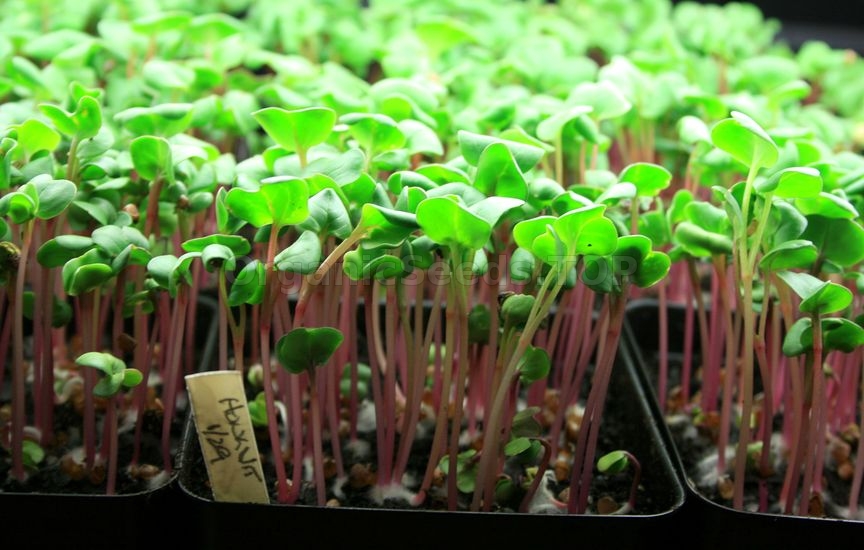 If I was really on top of my game, I would have posted this tutorial back in the dead of winter when nothing was growing outside. Now, a lot of folks (us included) have greens popping out of the ground and the harvest of fresh veggies is upon us again. Yay! So chances are, you probably don’t need a how-to guide to grow microgreens indoors right now. So, go ahead and pin this, and then set an alarm on your phone to go off sometime in November, k? Because I’m about to teach you how to grow microgreens indoors all winter long (or even all year long if you don’t have an outdoor space). You might be asking, well what the heck is a microgreen? Well, a microgreen is the new, tender shoot of a vegetable plant. It’s what happens if you let a sprouted seed go a little bit further into growing, but don’t let it completely mature. These greens are tender, sweet, and insanely good for you—they are literally one of the healthiest veggies on the planet! 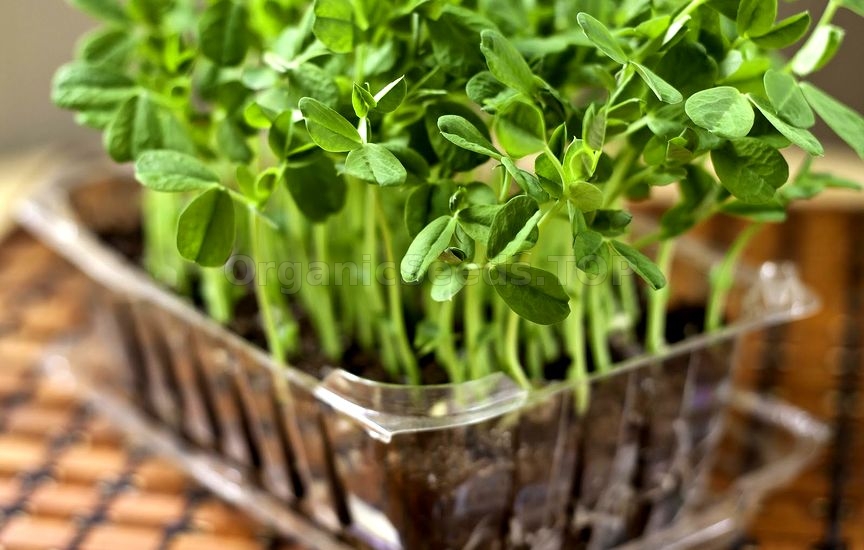 Newly sprouted, tiny microgreens have up to 4o times the nutrient impact as their mature plant counterparts. 40 TIMES! Just a single example: microgreens from red cabbage seeds have 40 times more vitamin E and six times more vitamin C than fully-grown red cabbage. Crazy, right? Microgreens make an awesome winter substitute for lettuce or other cooking greens—we like microgreen and sprout salads in the winter when our garden isn’t producing. You can also use them on sandwiches, in stir-fries, or in casseroles. And the best part is, they are insanely easy to grow indoors. Like, I promise you can do it. Even if you’ve killed stuff before. You can do it! So, what do you need to get to grow microgreens? Not much, actually:
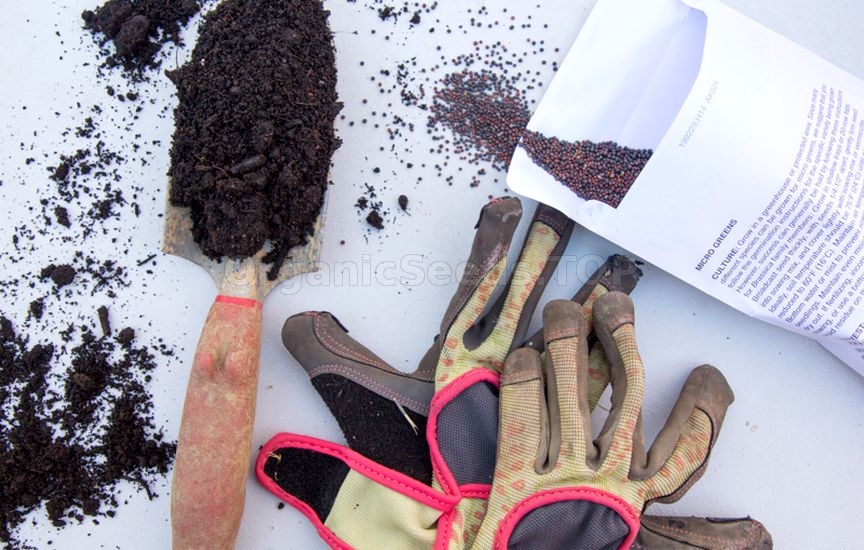 First step is to fill up your tray with soil. Since these plants aren’t going to be in there very long (9-12 days), they won’t develop a very intricate root system, which means you don’t need a whole lot of soil. About two inches worth should be more than enough. 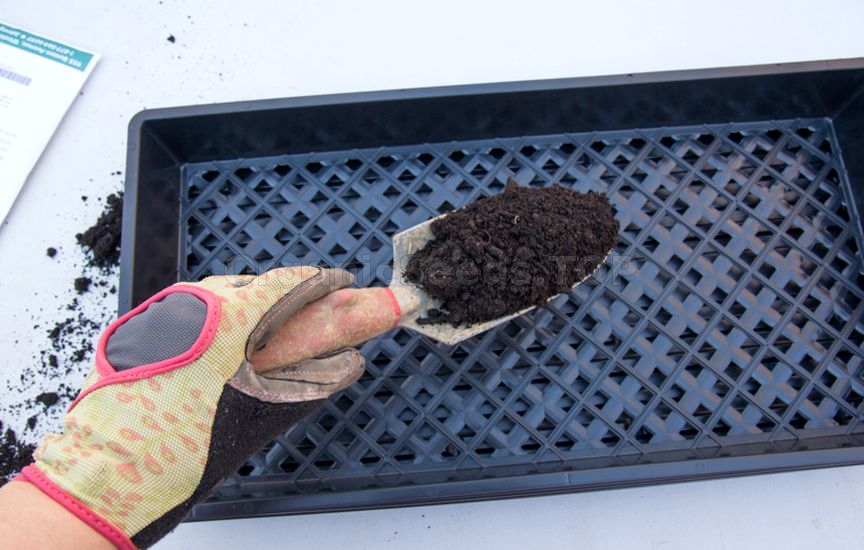 Then you broadcast your seeds across the surface of the soil. No need to worry about getting it perfectly even or spaced out equally. 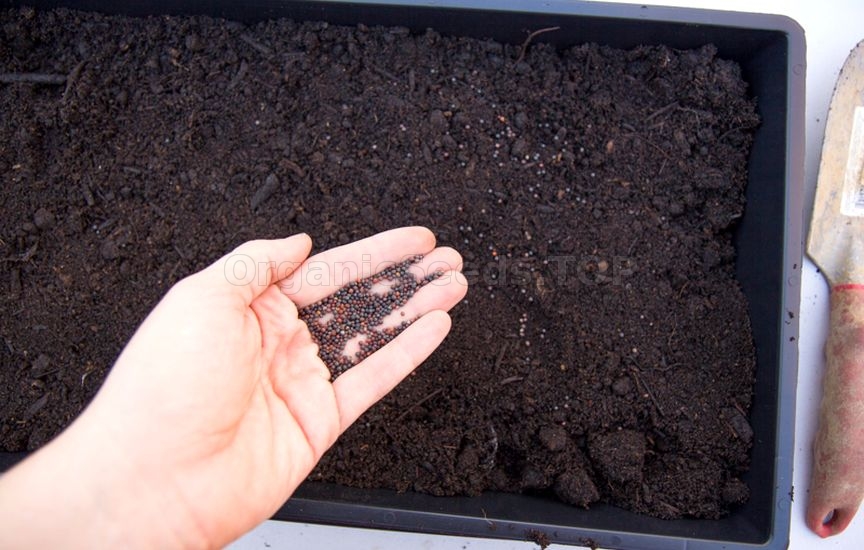 You want to put a pretty thick coating down. Unlike when you’re growing a full, adult plant, you don’t have to worry about overcrowding with microgreens. Pack ’em in. 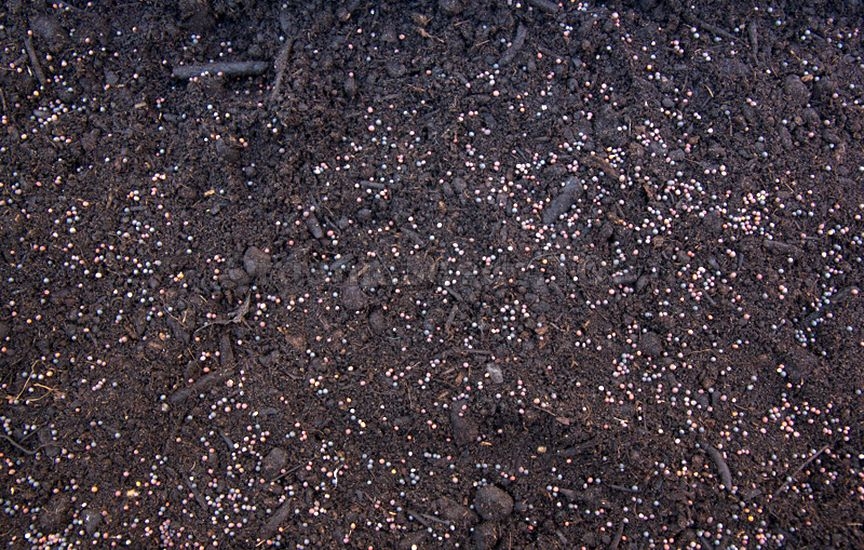 Next, take a little more soil in your hand, and sprinkle it over the seeds. You’re just looking for light coverage here. Again, no need to be perfect. You don’t have to cover every seed exactly the same. 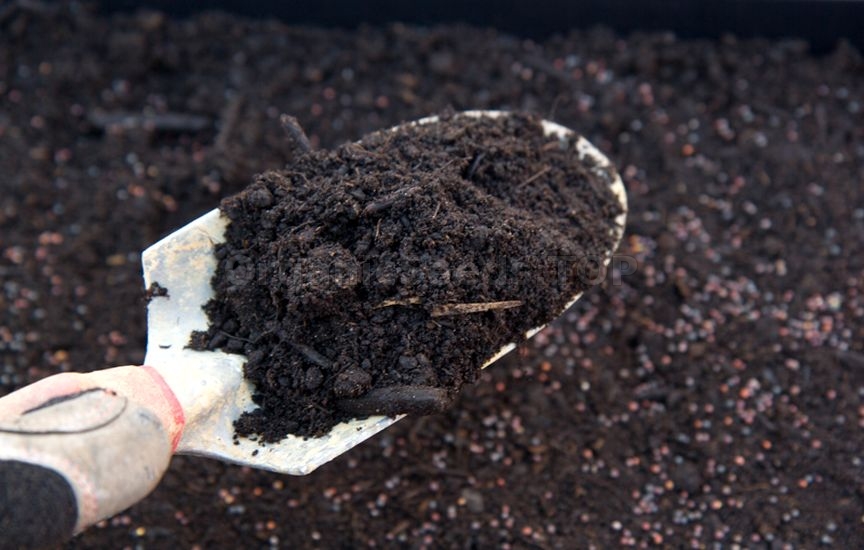 Then take your hand and lightly press down all across the tray to really set the seeds into their new home. 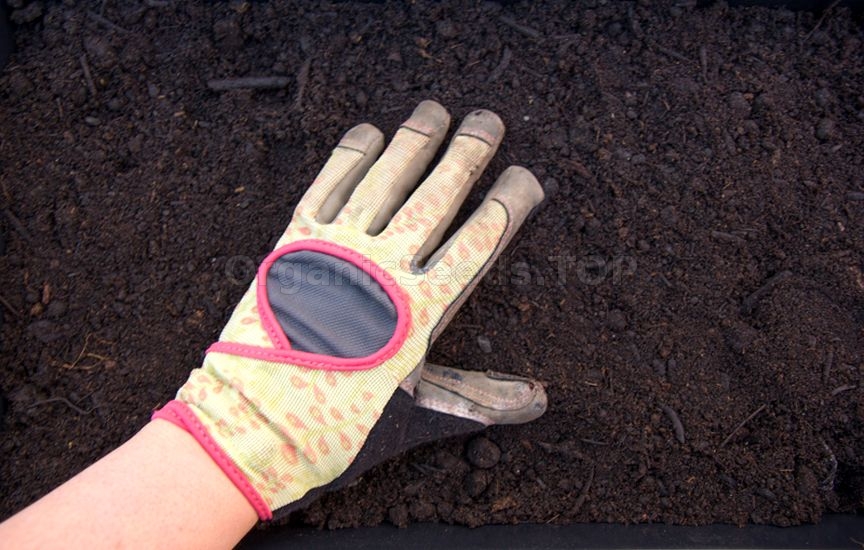 Last planting step: give ’em a good drink of water. The spray bottle is for later, now is the time to use a watering can or the mist option on your hose sprayer. You don’t want them swimming in water, but you do want them very, very damp.  Then put your tray in your sunny spot and wait! Or, if you are putting them under a grow light, place them directly under the light. You actually want the light to be almost touching the top of the tray (the light in this picture is actually a bit too high up). 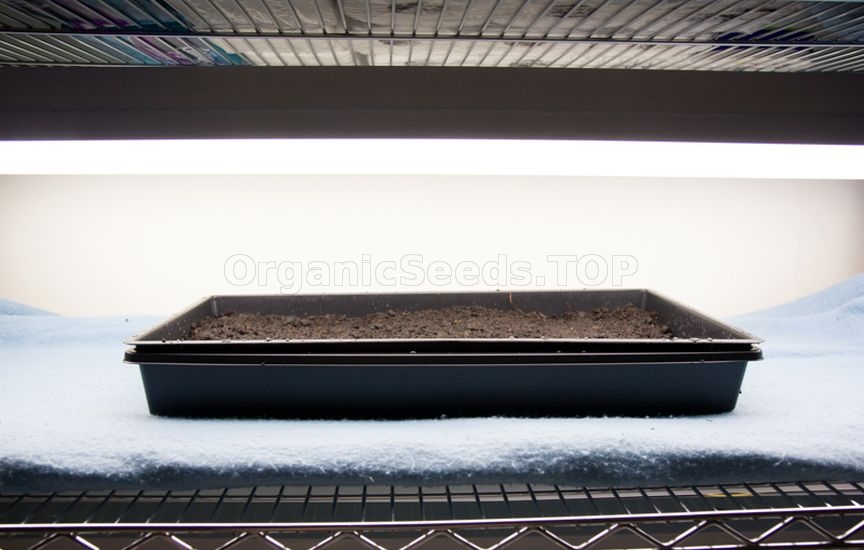 If you’re trying to start your seeds in a particularly cool place, you might want to think about either cranking the heat for a few days while the seeds germinate, or use a seed starting mat. You can get seed starting mats from gardener’s supply stores for beaucoup dollars, or you can do what we do, and just use an old electric blanket under the tray. A heating pad works, too! 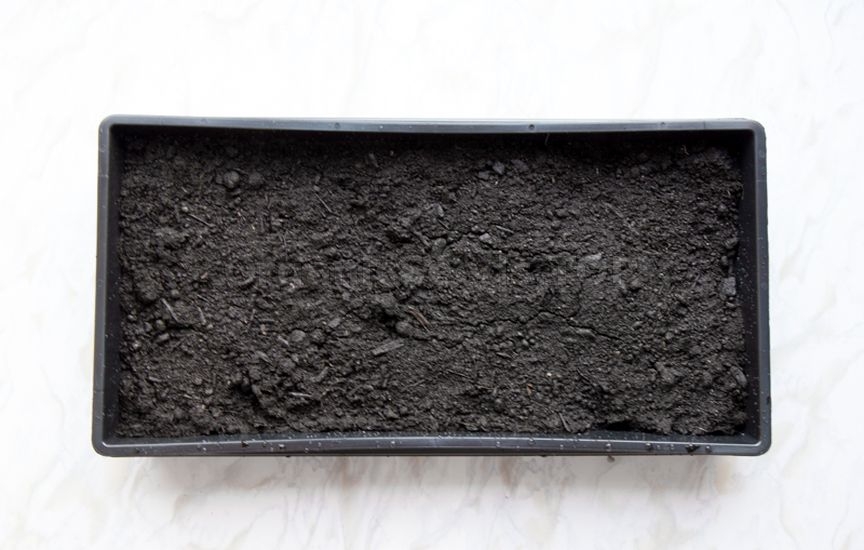 And then, you wait. A few times a day, give the tray a good spritzing with water. And if you see some of your microgreens growing in an irregular pattern, try rotating your tray every few days. The seeds closer to the light (this is especially true in a sunny window) might grow faster than the ones further away. After about three days, you’ll see some seeds germinating. You’ll see two little circular leaves pop up—those are called the cotyledon—they are the extra food reserves for the seed to keep germinating. 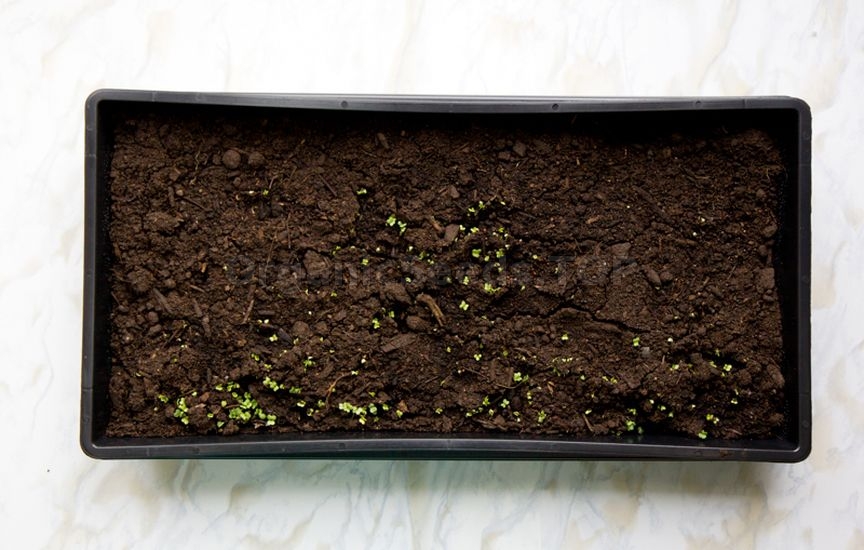 A few days later, you’ll see even more seed germinating, and then the true leaves starting to show. These are the ones that actually start looking like the plants you are used to, albeit really tiny, adorable versions. 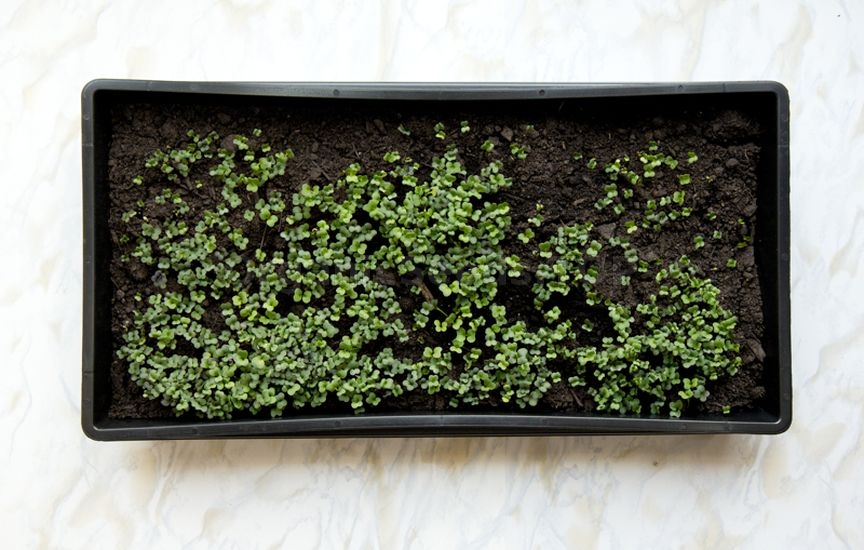 And then after a little over a week, you’ll have a whole tray full of beautiful microgreens. You can choose to harvest at any point after the true leaves show up. I normally let mine go until about the 10 day mark, when the greens are about two inches tall. 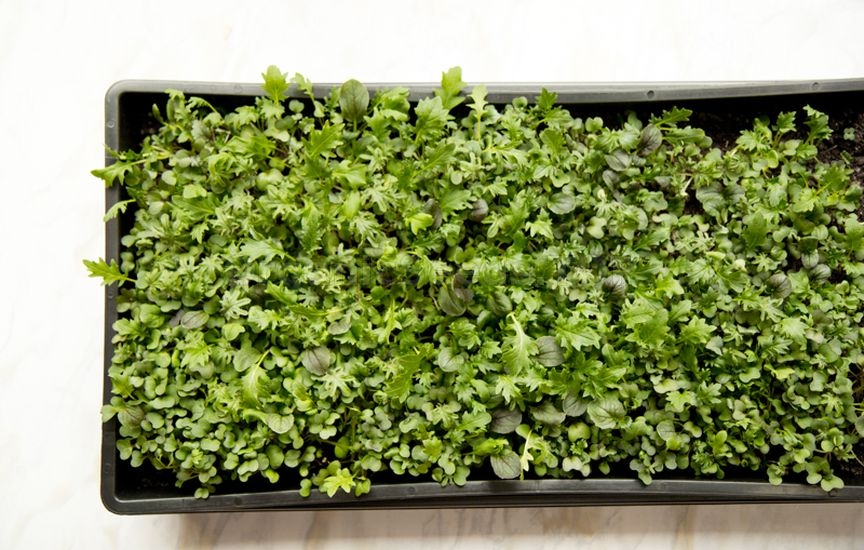 To harvest, you can either clip the greens with sharp kitchen scissors.  Or do what I do, and pull out the greens and shake off the extra soil. You’ll need the soil to be extra dry to do it properly, so I stop watering a few days before I’m going to harvest. Then, on harvest day, pull up the greens, and shake of the excess soil. 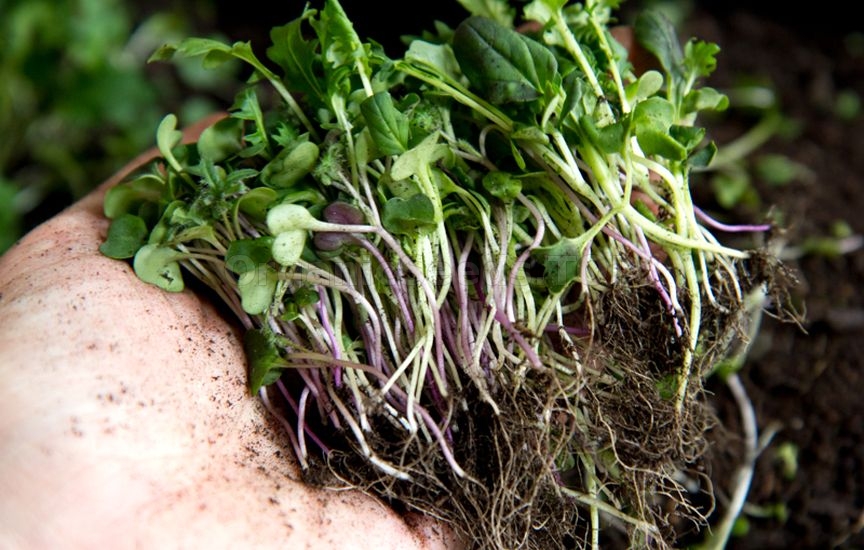 Then I do 3-4 wash cycles on the greens, making sure they are full submerged in cold water each time. Then spread them out on a towel and dry them off slightly (a salad spinner works, too). To store, I then wrap them in paper towels and place in an airtight container in the fridge. 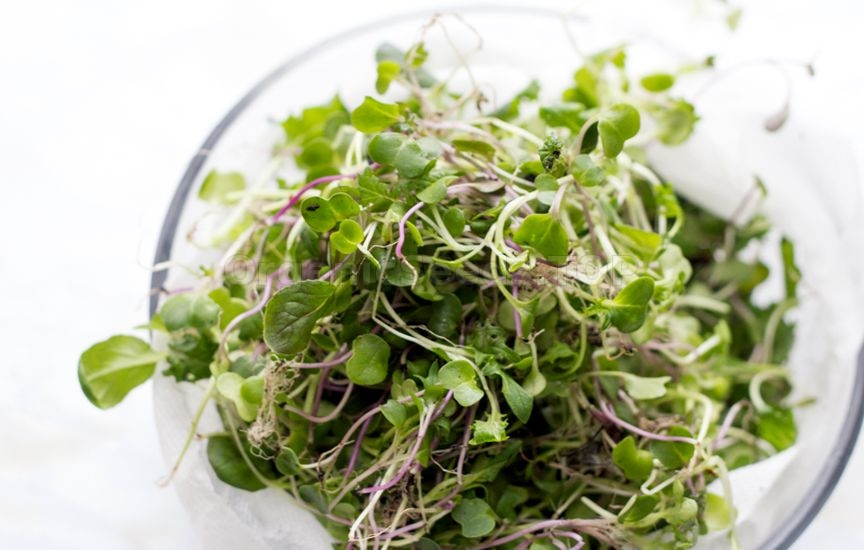 The soil can then be composted, and you can start all over again! Or, if you’re really on top of things, you can have multiple trays going at the same time. I’ve found that starting a tray each week ends up working out well for us—it takes us about a week to get through the harvest from one tray. 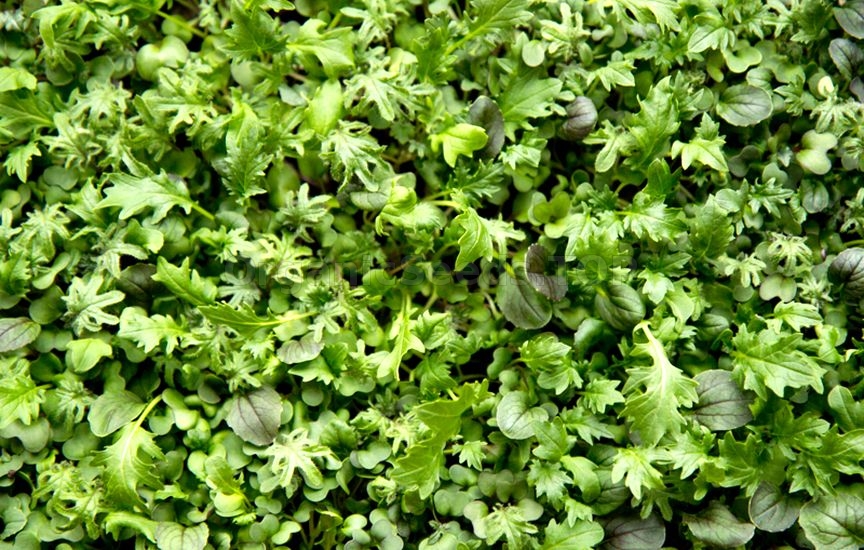 See, super easy, right? You can totally grow your own food! I promise. Happy growing! You may need:Organic Microgreen Seeds«Dryad» - Organic Wheat Seeds«Macro Health» - Organic Chia Seeds«Healthy Sprouts» - Organic Rye Seeds«White Vent» - Organic Panic Grass Seeds |
|
|
